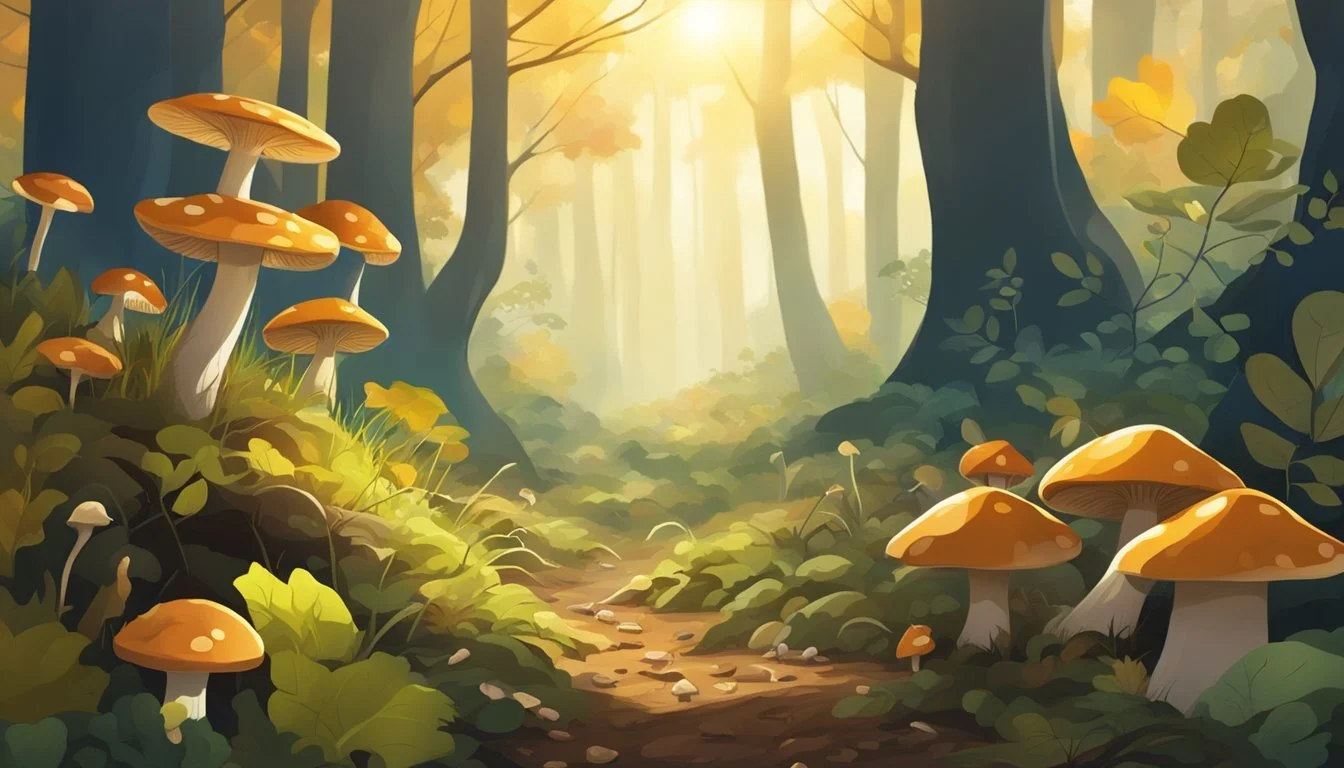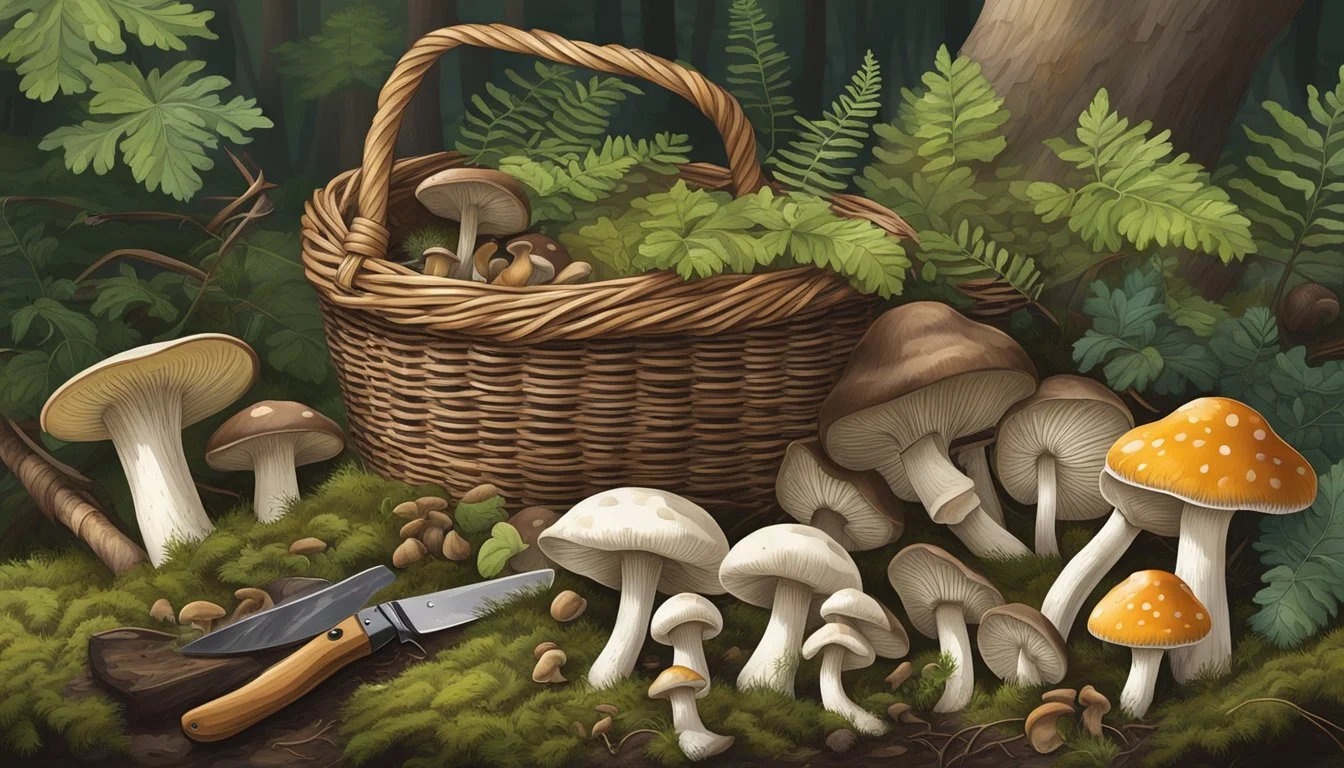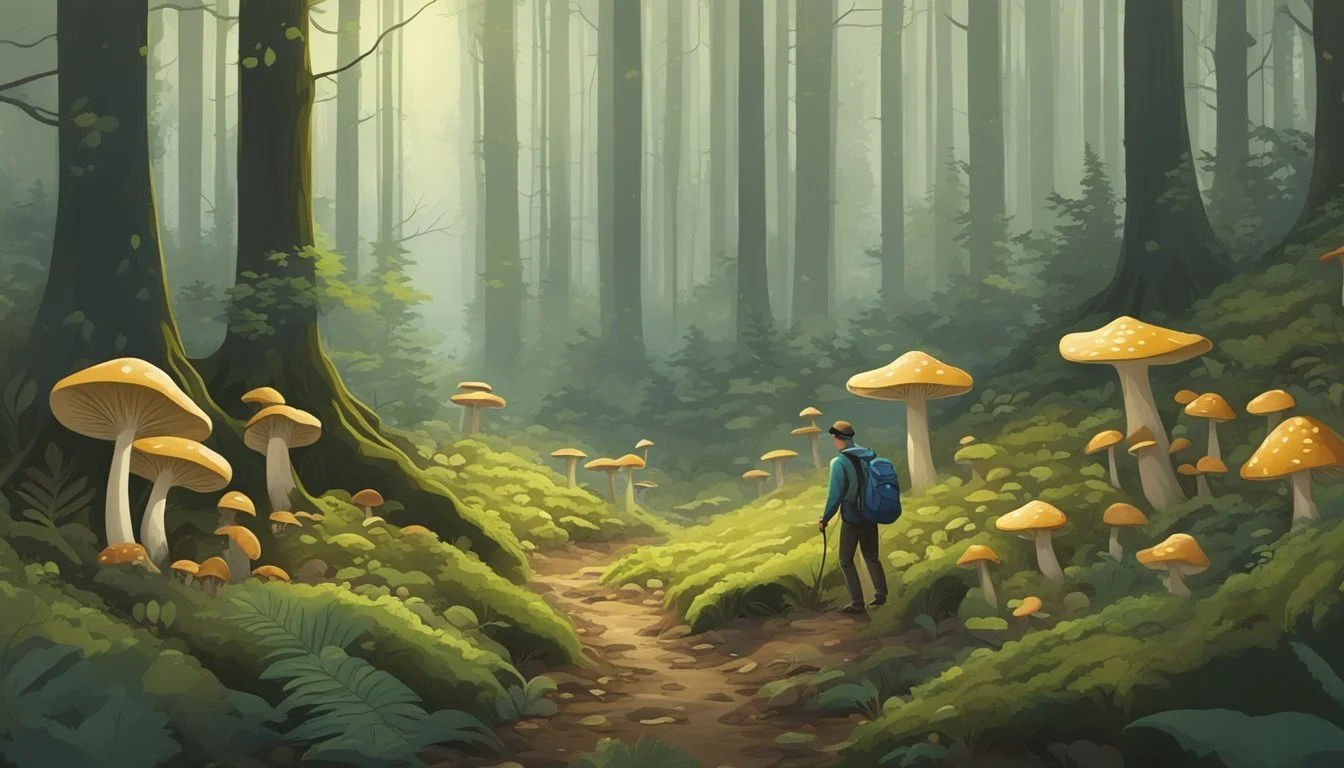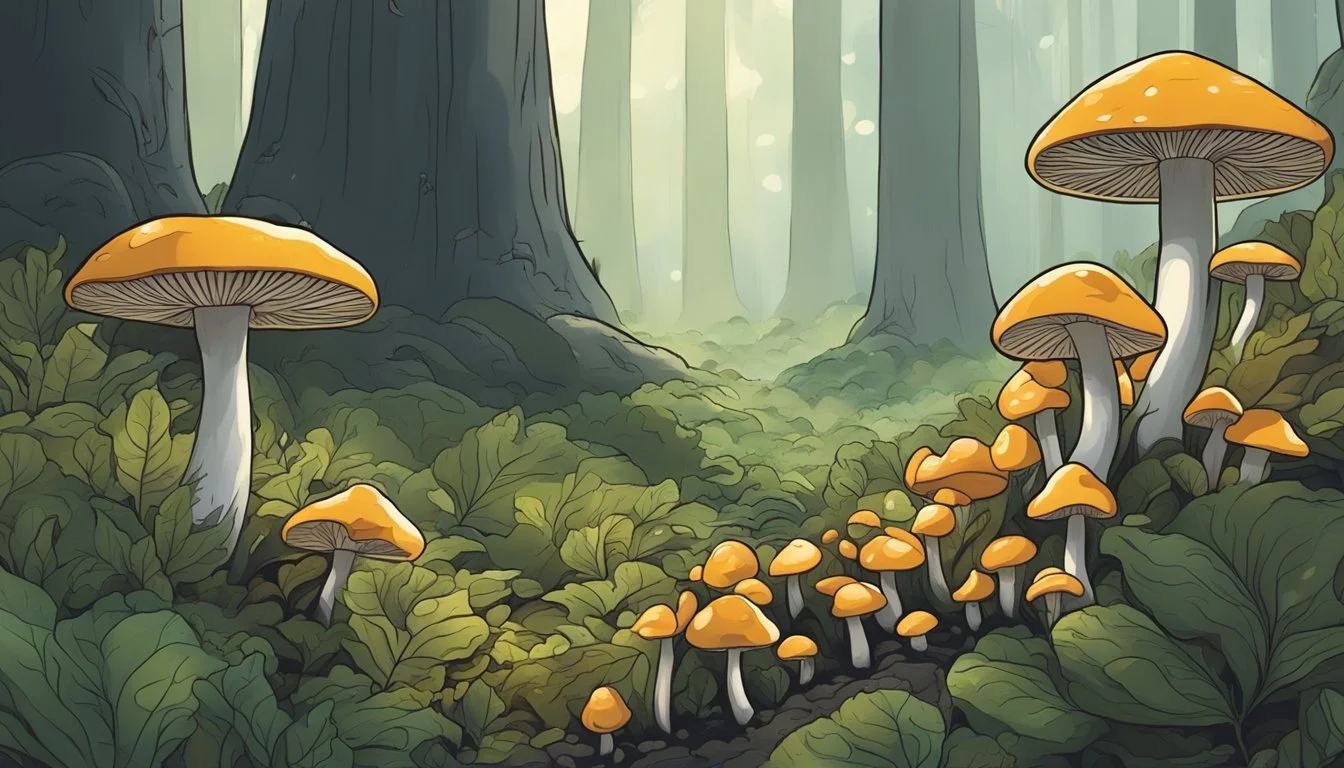Tidewater Mushroom Hunting
Discover Prime Foraging Spots and Tips
Tidewater Mushroom Hunting offers a unique blend of adventure and sustainable foraging that attracts both novice and seasoned mycologists. The Tidewater region, extending through parts of Virginia, provides an ideal habitat for various mushroom species, thanks to its rich, diverse ecosystems that include forests, wetlands, and coastal areas. This region is particularly favored for its abundance of edible and medicinal mushrooms, making it a hotspot for passionate foragers.
The community surrounding Tidewater mushroom hunting is robust and supportive. Forums such as the Virginia Mushroom Identification Forum on Facebook serve as valuable resources for enthusiasts to share their finds and gain insights. Additionally, local companies like Tidewater Mushrooms emphasize sustainable farming practices, providing foragers with eco-friendly inspirations.
For those interested in exploring this hobby further, local groups and social media platforms like Reddit and Instagram offer a wealth of information and camaraderie. The Tidewater Mushroom Company, for instance, provides updates and tips for local foraging, highlighting the blend of community engagement and sustainability that defines Tidewater Mushroom Hunting.
Understanding Tidewater Region
Tidewater, Virginia, characterized by its unique geographical and climatic conditions, offers diverse habitats that significantly influence its flora and fauna.
Geographical Features
The Tidewater region consists of coastal plains and numerous waterways, including rivers and estuaries. Key features are river bottoms and ditches, which frequently experience irregular flooding. These areas provide moist, nutrient-rich soil ideal for mushroom growth. The landscape includes forests of oak, pine, and mixed hardwoods. These varied environments create a unique mosaic that supports diverse plant and animal life.
Climate and Weather
The Tidewater region enjoys a temperate climate with four distinct seasons. Summers are hot and humid, while winters are mild with occasional snowfall. Rainfall is well-distributed throughout the year, contributing to the region’s lush vegetation. Irregular flooding due to storms or seasonal changes can create microhabitats rich in decomposing organic matter, perfect for mushrooms to thrive. Spring and fall are particularly favorable for mushroom hunting, as the moderate temperatures and higher humidity levels promote fungal growth.
Flora and Fauna
The Tidewater area hosts a rich variety of plant and animal species. Common trees include cottonwoods and aspens, which are often associated with the presence of morel mushrooms. The region’s flora provides ample organic matter, fostering a vibrant mushroom ecosystem. The fauna includes species adapted to wet environments, such as frogs, salamanders, and waterfowl. These creatures, along with decomposing plant material, contribute to the nutrient cycles that support mushroom proliferation in this region.
Mushroom Hunting Essentials
Mushroom hunting requires awareness of legal regulations, safety protocols, and the proper equipment. Adhering to these essentials ensures a safe and productive foraging experience.
Legal Considerations
Foragers must be knowledgeable about local and state regulations. In some areas, a trapping license or permit might be required for mushroom hunting, even for personal use. It's crucial to check if the area mandates specific permissions, similar to boat registration rules in various jurisdictions.
Certain public lands may allow foraging but limit the quantity harvested. Always respect private property laws and acquire the necessary consent from landowners. Illegal collection can result in fines or more severe penalties, making it important to stay informed and compliant.
Safety and Etiquette
Safety should be the top priority. Foragers must be proficient in identifying edible mushrooms versus toxic ones. Carry a reliable field guide or use a mushroom identification app for assistance. Bring a first aid kit to handle minor injuries.
When mushroom hunting, wear waterproof clothing and sturdy boots. A headlamp can be handy in low light conditions. Always forage with a partner or inform someone about your location and expected return time to ensure safety. Follow the leave-no-trace principles to protect the environment.
Equipment and Technology
Proper equipment elevates the foraging experience. Essentials include a sharp mushroom knife or scissors, a large basket for collecting mushrooms, and a magnifying glass for examining specimens. A notebook and pen support documentation of findings.
Technology complements traditional tools. Smartphone apps dedicated to mushroom identification can be invaluable. GPS devices help navigate and mark foraging spots. Always carry a fully charged phone for emergencies and use it to check weather updates and maps. Equip yourself fully for a successful and safe outing.
Species Spotlight
This section explores the types of mushrooms you might encounter while hunting and how to identify them, focusing on morels, edible varieties, and toxic fungi.
Morels in Detail
Morel mushrooms are highly sought after for their distinctive appearance and culinary value. The black morel is characterized by its dark, honeycombed cap, while the yellow morel has a lighter, conical shape. These mushrooms typically grow in forests, particularly around dead or dying trees, such as elms, sycamores, and balsams. Spring is the prime season for morel hunting, aligning with blooming lilacs. Hunters often use a soft brush to clean morels in the field, ensuring they remain intact.
Spotting Edible Varieties
When foraging for edible mushrooms, it's crucial to recognize and differentiate them from toxic species. Chanterelles are known for their vibrant orange color and fruity scent. Oyster mushrooms exhibit a fan-like shape and grow on decaying wood. Boletes have a spongy layer beneath their caps instead of gills, making them easier to identify. Using a knife to cut mushrooms cleanly and a basket to carry them allows spores to disperse and promotes forest health.
Identifying Common Toxic Fungi
Awareness of common toxic fungi is essential for safe mushroom hunting. Amanita species, such as the deadly Amanita phalloides (Death Cap), are notorious for their lethal toxins. These mushrooms often have white gills and a volva at the base of the stem. False morels can be mistaken for true morels but have irregular, brain-like caps and contain harmful toxins. Additionally, Jack-o'-Lantern mushrooms are bioluminescent and grow in clusters but can cause severe stomach upset. Hunters should always cross-reference with a reliable field guide and, when in doubt, leave the mushroom in the wild.
Before You Begin
Understanding the optimal times for mushroom foraging and how to read the landscape are crucial for successful Tidewater mushroom hunting. Familiarize yourself with the best conditions for mushroom growth and key landscape features.
Best Times for Mushroom Foraging
The best time for mushroom foraging in the Tidewater region is typically during the spring. This season offers the right combination of soil temperature and moisture, which are critical for mushroom growth. After periods of rain, the increased moisture in the soil creates an ideal setting for mushrooms to flourish.
During cooler spring months, fallen trees and shaded areas will often harbor a variety of mushrooms due to higher moisture retention. Morning foraging is recommended, as mushrooms are firmer and easier to spot.
Reading the Landscape
When hunting for mushrooms in the Tidewater area, reading the landscape accurately is key. Look for loamy soils that are a mix of sand, clay, and organic matter. These areas often support diverse mushroom species.
Streams, creeks, and swampy regions are prime locations due to their high moisture content. Pay close attention to fallen trees and shaded areas where mushrooms are likely to thrive. Soil temperature plays a significant role, so checking for cooler, moist ground can lead to better yields.
Foraging Techniques
Foraging for mushrooms in the Tidewater region involves understanding where to find different species and how to effectively search for them. Key techniques include identifying suitable habitats and using precise methods to locate and collect mushrooms.
Identifying Morel Habitats
Locating morels often requires searching in particular environments.
Morels have a preference for areas around elm, ash, sycamore, and tulip poplar trees. They thrive in soils with temperatures between 45 to 60 degrees Fahrenheit, typically aligning with the flowering of certain plants.
Checking local soil temperature reports or using a soil thermometer can help in timing the search. Rainfall is also crucial, as morels need adequate moisture; too much or too little can hinder their growth.
Morels tend to grow in areas with a mix of damp and well-drained soils.
Methods for Locating Mushrooms
Effective foraging requires proper tools and techniques. Carry a basket to collect mushrooms and allow spores to disperse. Use a knife to cut stems cleanly, and a brush to gently clean off dirt.
Walking along streams and creeks can be productive, as these areas offer high moisture and suitable soil content. Swampy areas are also favorable, even in hot weather.
Mesh bags can be used to separate different types of mushrooms during collection. It’s also recommended to carry a map to navigate and ensure you are in the right geographic locations where specific mushrooms are known to thrive.
Post-Hunt Practices
After a successful tidewater mushroom hunt, it is essential to clean and preserve the mushrooms properly to ensure safety and enhance their culinary value. This process helps retain their textures and flavors for future use in a variety of dishes.
Cleaning
Start by gently brushing off any dirt or debris from the mushrooms using a soft-bristled brush. Avoid soaking them in water, as they can absorb moisture and become soggy.
Use a damp cloth or paper towel to wipe off any remaining particles. A small, sharp knife is helpful for trimming the base of the stems and removing any discolored or damaged parts. Properly cleaning mushrooms preserves their natural texture and taste.
Preserving
Preservation methods vary depending on the intended use. For immediate consumption, mushrooms can be stored in a paper bag in the refrigerator.
To extend their shelf life, consider drying them by using a food dehydrator or a low-temperature oven. Once dried, mushrooms can be stored in an airtight container and rehydrated when needed.
Freezing is another option. Sauté the mushrooms lightly before freezing to preserve their flavor and texture. They can be added directly to soups, stews, frittatas, and wild turkey burgers from the frozen state.
Proper preservation ensures that the mushrooms remain delicious and safe for consumption in a range of dishes.
Tidewater Regulations
Tidewater mushroom hunting in North Carolina involves understanding specific restrictions related to wildlife management areas and obtaining necessary permits. Ensuring sustainable foraging practices and adherence to regulations is essential for preserving local ecosystems.
Wildlife Management Areas
Wildlife management areas provide crucial habitats for various animal and plant species. They are often managed by state wildlife agencies and may contain specific rules regarding mushroom foraging.
For example, some areas might prohibit the collection of certain species to protect biodiversity. Mucilage reserves, like those for matsutake and truffles, are typically off-limits to ensure ecological balance. Always check the latest information provided by the managing authority for each designated area before heading out.
Understanding Permits
An access permit is often required for mushroom hunting in Tidewater regions. These permits typically come with specific terms to ensure sustainable harvesting practices.
For instance, daily permits may start at around $8, with options for half-season or full-season access costing $100 and $200, respectively. Regulations often cap the amount of harvestable mushrooms to protect fungal populations and enable spore dispersal. Hunters should familiarize themselves with these limits, as failure to comply can result in fines or bans.
Related Outdoor Activities
In addition to mushroom hunting, Tidewater's natural resources offer a variety of outdoor pursuits such as fishing, hunting, and boating. These activities not only allow enthusiasts to connect with nature but also provide opportunities for harvesting food.
Fishing and Hunting
Tidewater is renowned for its freshwater fishing opportunities. Anglers can target species such as walleye, which are particularly active during the spawning season. The region is also famous for its oysters, which can be harvested with the right permits.
For those interested in hunting, the area offers rich populations of wild turkeys. Hunting these birds not only provides sport but also yields quality meat, perfect for making wild turkey burgers. Choosing the right season and methods ensures a fruitful hunt while respecting conservation rules.
Boating and Navigating Waterways
Boating is a popular activity in Tidewater, given the extensive network of waterways. Ensuring proper boat registration and safety gear is essential for a smooth experience on the water. Boaters can explore scenic routes, fish directly from their vessels, or simply enjoy a relaxing day navigating through serene environments.
Navigating these waterways also offers the chance to spot local wildlife and experience the region’s natural beauty up close. Whether one is using a motorboat, kayak, or canoe, the diverse waterways cater to a wide range of preferences and skill levels.
Conservation Efforts
Focused conservation efforts play a crucial role in ensuring the future of tidewater mushroom ecosystems, encompassing elements like sustainable foraging and habitat protection.
Sustainable Foraging
Sustainable foraging is essential for the preservation of tidewater mushroom populations. Hunters should adhere to guidelines to avoid overharvesting.
To start, they must identify only mature mushrooms, leaving the younger ones to grow and reproduce. This helps maintain a stable population over time. Rotational foraging—collecting from different areas each season—also minimizes impact on any single area.
Additionally, using a knife to cut mushrooms rather than pulling them from the ground helps protect the mycelium. This underground network is vital for future growth and must remain undamaged.
Public education on sustainable practices is another key aspect. Foragers should be informed through workshops and guides distributed by local conservation groups and park services. These resources ensure the community is engaged in protecting their natural resources.
Habitat Protection
Protecting the habitat of tidewater mushrooms is critical for their survival. Key habitats include old-growth forests and areas with specific moisture levels, often affected by timber extraction and urban development.
Protective measures such as establishing conservation zones can prevent habitat degradation. Restricting logging activities in these zones ensures that critical ecosystems remain intact.
Public and private land partnerships further help in this cause. Collaboration between governments, non-profits, and private landowners can create an integrated approach to habitat protection. Monitoring and regulating water quality also preserve necessary moisture levels for mushroom growth.
Legal frameworks play an indispensable role as well. Enforcing regulations against unauthorized foraging and habitat destruction ensures long-term conservation goals are met. These combined efforts foster both ecological balance and sustainable use of mushroom resources.











